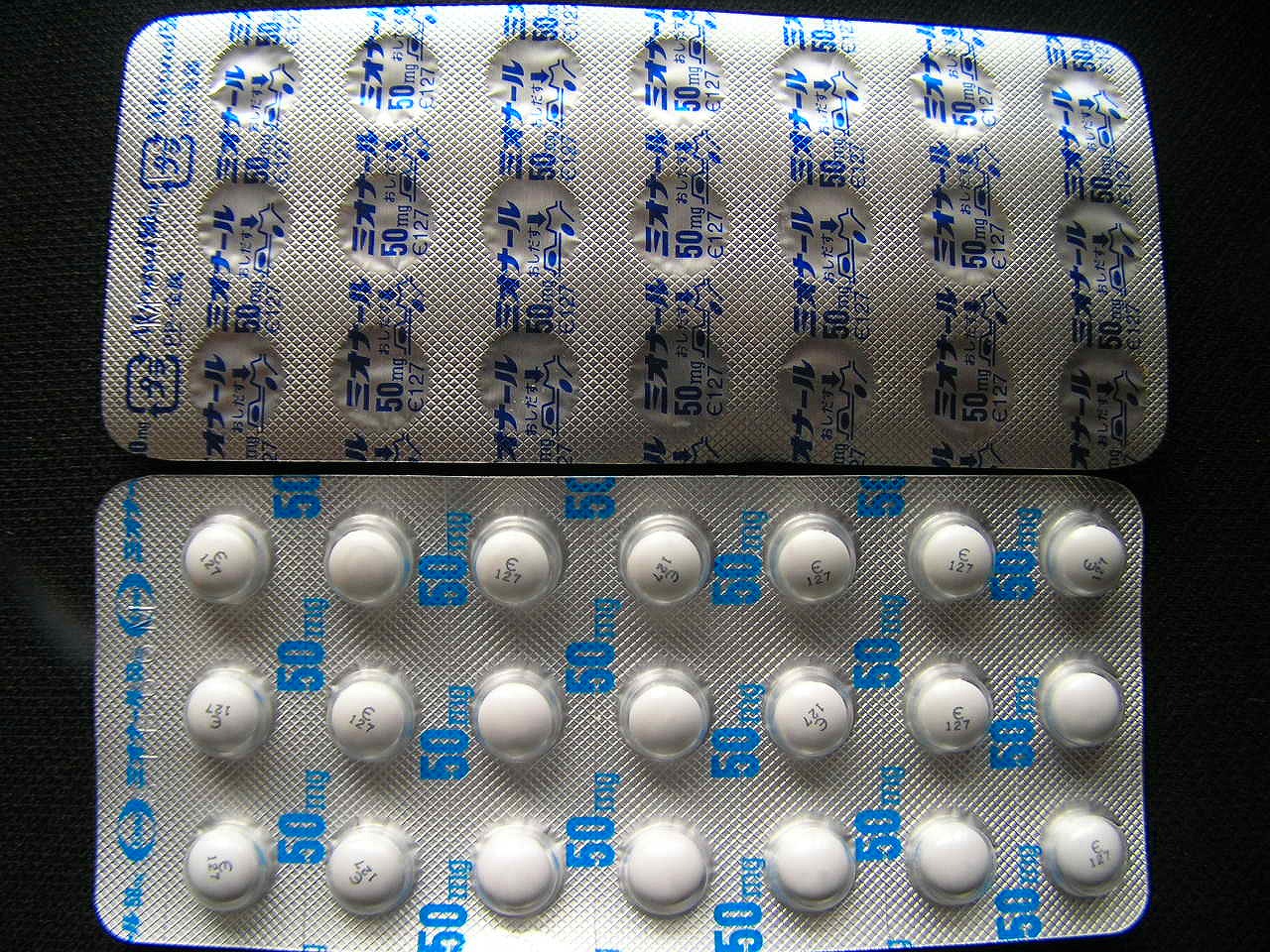|
Silperisone
Silperisone (INN) is a muscle relaxant. See also * Chemically and mechanistically related drugs: eperisone, inaperisone, lanperisone, tolperisone Tolperisone (trade name Mydocalm among others) is a centrally acting skeletal muscle relaxant used for the treatment of increased muscle tone associated with neurological diseases. It has been used since the 1960s. Medical uses Tolperisone is i ... References Muscle relaxants 1-Piperidinyl compounds Silanes Fluoroarenes Organosilicon compounds {{musculoskeletal-drug-stub ... [...More Info...] [...Related Items...] OR: [Wikipedia] [Google] [Baidu] |
Muscle Relaxant
A muscle relaxant is a drug that affects skeletal muscle function and decreases the muscle tone. It may be used to alleviate symptoms such as muscle spasms, pain, and hyperreflexia. The term "muscle relaxant" is used to refer to two major therapeutic groups: neuromuscular blockers and spasmolytics. Neuromuscular blockers act by interfering with transmission at the neuromuscular end plate and have no central nervous system (CNS) activity. They are often used during surgical procedures and in intensive care and emergency medicine to cause temporary paralysis. Spasmolytics, also known as "centrally acting" muscle relaxant, are used to alleviate musculoskeletal pain and spasms and to reduce spasticity in a variety of neurological conditions. While both neuromuscular blockers and spasmolytics are often grouped together as muscle relaxant, [...More Info...] [...Related Items...] OR: [Wikipedia] [Google] [Baidu] |
Eperisone
Eperisone (formulated as the eperisone hydrochloride salt) is an antispasmodic drug. Eperisone acts by relaxing both skeletal muscles and vascular smooth muscles, and demonstrates a variety of effects such as reduction of myotonia, improvement of circulation, and suppression of the pain reflex. The drug inhibits the vicious circle of myotonia by decreasing pain, ischaemia, and hypertonia in skeletal muscles, thus alleviating stiffness and spasticity, and facilitating muscle movement Eperisone also improves dizziness and tinnitus associated with cerebrovascular disorders or cervical spondylosis. Eperisone has a relatively low incidence of sedation when compared with other antispasmodic drugs; this simplifies the clinical application of the drug and makes it an attractive choice for patients who require antispasmodic therapy without a reduction in alertness. Eperisone also facilitates voluntary movement of the upper and lower extremities without reducing muscle power; it is th ... [...More Info...] [...Related Items...] OR: [Wikipedia] [Google] [Baidu] |
Inaperisone
Inaperisone (INN) is a muscle relaxant. See also * Chemically and mechanistically related drugs: eperisone, lanperisone, silperisone, tolperisone Tolperisone (trade name Mydocalm among others) is a centrally acting skeletal muscle relaxant used for the treatment of increased muscle tone associated with neurological diseases. It has been used since the 1960s. Medical uses Tolperisone is i ... References Muscle relaxants Pyrrolidines {{musculoskeletal-drug-stub ... [...More Info...] [...Related Items...] OR: [Wikipedia] [Google] [Baidu] |
Lanperisone
Lanperisone (INN) is a muscle relaxant. See also * Chemically and mechanistically related drugs: eperisone, inaperisone, silperisone, tolperisone Tolperisone (trade name Mydocalm among others) is a centrally acting skeletal muscle relaxant used for the treatment of increased muscle tone associated with neurological diseases. It has been used since the 1960s. Medical uses Tolperisone is i ... References Muscle relaxants Pyrrolidines Trifluoromethyl compounds {{musculoskeletal-drug-stub ... [...More Info...] [...Related Items...] OR: [Wikipedia] [Google] [Baidu] |
Tolperisone
Tolperisone (trade name Mydocalm among others) is a centrally acting skeletal muscle relaxant used for the treatment of increased muscle tone associated with neurological diseases. It has been used since the 1960s. Medical uses Tolperisone is indicated for use in the treatment of pathologically increased tone of the skeletal muscle caused by neurological diseases (damage of the pyramidal tract, multiple sclerosis, myelopathy, encephalomyelitis) and of spastic paralysis and other encephalopathies manifested with muscular dystonia. Other possible uses include: *Spondylosis *Spondylarthrosis *Cervical and lumbar syndromes *Arthrosis of the large joints * Obliterating atherosclerosis of the extremity vessels *Diabetic angiopathy *Thromboangiitis obliterans *Raynaud's syndrome Contraindications and cautions Manufacturers report that tolperisone should not be used in patients with myasthenia gravis. Only limited data are available regarding the safety in children, youths, during pr ... [...More Info...] [...Related Items...] OR: [Wikipedia] [Google] [Baidu] |
Muscle Relaxants
A muscle relaxant is a drug that affects skeletal muscle function and decreases the muscle tone. It may be used to alleviate symptoms such as muscle spasms, pain, and hyperreflexia. The term "muscle relaxant" is used to refer to two major therapeutic groups: neuromuscular blockers and spasmolytics. Neuromuscular blockers act by interfering with transmission at the neuromuscular end plate and have no central nervous system (CNS) activity. They are often used during surgical procedures and in intensive care and emergency medicine to cause temporary paralysis. Spasmolytics, also known as "centrally acting" muscle relaxant, are used to alleviate musculoskeletal pain and spasms and to reduce spasticity in a variety of neurological conditions. While both neuromuscular blockers and spasmolytics are often grouped together as muscle relaxant, [...More Info...] [...Related Items...] OR: [Wikipedia] [Google] [Baidu] |
Silanes
Silanes refers to diverse kinds of charge-neutral silicon compounds with the formula . The R substituents can any combination of organic or inorganic groups. Most silanes contain Si-C bonds, and are discussed under organosilicon compounds. Examples: *Silane , the parent. *Binary silicon-hydrogen compounds (which are sometimes called silanes also) includes silane itself but also compounds with Si-Si bonds including disilane and longer chains. *Silanes with one, two, three, or four Si-H bonds are called hydrosilanes. Silane itself is the parent member. Examples: triethylsilane () and triethoxysilane (). *Polysilanes are organosilicon compounds with the formula . They include all binary silicon-hydrogen compounds except the parent, although these tend to be less useful because they are fragile. Attracting more interest, are the organic derivatives such as polydimethylsilane and dodecamethylcyclohexasilane *Chlorosilanes have Si-Cl bonds. Examples: trichlorosilane () and tetrachlo ... [...More Info...] [...Related Items...] OR: [Wikipedia] [Google] [Baidu] |


